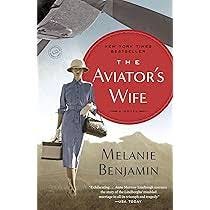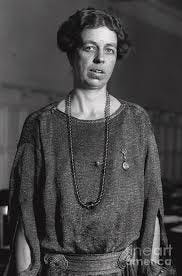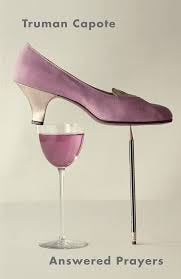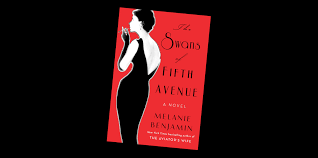Swanning Around
Everything You Always Wanted to Know About The Swans of Fifth Avenue But Were Afraid to Ask
Ahh! Fall! Always feels like the beginning of the school year to me, even now. It’s a time for new beginnings, for buckling down to work. It’s also the time of year that brings back one of my favorite publishing memories, because it was right around now, in 2014, when I turned in The Swans of Fifth Avenue to my editor. And just a couple of days later I got the best email of my life, the most enthusiastic, astonishingly glowing reception of a book I’ve ever received, before or since. It was one of those indelible memories; my husband and I were sitting in the rooftop bar of the Hotel Lincoln celebrating Labor Day weekend and contemplating a move from the suburbs to the city. But still kind of looking for a sign, you know? Because it was such a big decision. Right then, my phone dinged and I read this email and I turned to my husband and I said, “Let’s do it. Because I think I’m on the verge of something big here.”
And that turned out to be true and we did move, and the rest is history.
But how did I come to write The Swans in the first place? Well, here’s the story.
After I turned in The Aviator’s Wife, but before it came out, I started writing another novel, the 2nd of a two-book contract. My editor loved the story (so did I!) and I did a lot of research that involved extensive travel. I had about 30,000 words done (fun fact: authors think in terms of word count, not page count. Because that’s how our contracts are worded – “a novel of approximately 100,000 words” or whatever. I have zero idea how many words equal a page!).
But my editor was beginning to sense that The Aviator’s Wife was going to be my breakout book; lots of good things were happening to it in the months prior to publication. So she started to have doubts about the book I was working on, mainly concerning the time period. This – if you’ve read previous Substacks – is the book I’m referring to that’s set in the late 1700s. It’s the book I’ve decided to return to now, as a matter of fact. Because it’s a GREAT story. Just set in a time period that’s not as popular as others. And that time period definitely was more risky thirteen years ago when my editor started to have doubts because Hamilton - and Bridgerton - hadn’t happened yet.
Hoping that The Aviator’s Wife was going to be a big book, my editor started to think I should write something more similar for my next one. Something more contemporary in time, and with a more recognizable figure like Anne Morrow Lindbergh was. So we agreed to shelve the Colonial era book and find something new. We mutually decided on another famous woman, and I wrote that novel, which was very similar to The Aviator’s Wife in subject and time period.
The Aviator’s Wife came out and exceeded both our expectations. We both felt that this next book was going to be the perfect follow-up.
Except, I couldn’t make that novel work. Oh, I tried! We tried, my editor and I! We revised and revised and revised. Ultimately I came to realize that it was the subject (no, not gonna say who it was!). Because the subject simply wasn’t vulnerable and warm enough to make you want to spend an entire book – 100,000 words! – with her.
That was an important lesson to me as an author. That some ideas are only good for a short story; they can’t sustain a novel. Because, especially with historical fiction, you have to want to spend a lot of time with this person. I’m a fan of complicated protagonists, even unlikeable ones. But there has to be something that makes you want to keep coming back to them.
I simply couldn’t find that something in the novel I was working on. She ultimately wasn’t a person who inspired any sympathy or empathy at all.
(A couple of years later I made the same mistake again with Eleanor Roosevelt. I wrote an entire novel about her and her daughter and mother-in-law only to discover that however admirable Eleanor was, she was not a person with whom you’d like to spend a lot of time. She was just too darn earnest and responsible and humorless.)
Anyhoo. Back to the novel that I started after I put away the novel that was supposed to be the follow-up to The Aviator’s Wife. (Got that?)
After months of trying to make that novel work I decided that it couldn’t be done. But I also knew I needed to come up with another idea, quick, before I told my editor this. So I started looking in my usual places for ideas. I won’t reveal what those usual places are; that’s telling too much. These are State Secrets!
But I will share that I also look to my own bookshelves for inspiration, as I’m a devourer of nonfiction – biographies in particular. This, in fact, is how I got the idea to write The Aviator’s Wife in the first place. By re-reading a biography of Charles Lindbergh.
So I was walking around looking at all the books on my shelves when one leapt out at me. It was a book called Answered Prayers by Truman Capote.
This slim tome was the only book I’d ever read by him, and I’d read it long ago and didn’t particularly like it. But I picked it up and browsed through it and then remembered, vaguely, that there was some kind of scandal attached to the publication of one of the short stories in this book. But I couldn’t remember the details.
The Google Machine soon explained the details. And boy! Wow! What a juicy story! After a quick search I realized no one had novelized this society scandal before. I sat down right then and pounded out the introduction and first chapter, then sent those off to my editor. Who loved them! And told me to scrap that other novel with the unlikeable heroine and write this one, tout de suite.
I did. Writing that novel was one of those miraculous experiences, a gift from the muses. It wrote itself, almost. I was done with it in just a few months, sent it to my editor, who then sent me that life-changing email.
You know the rest.
Not every book is such a gift. The Aviator’s Wife was a slog through the swamp and required an entire rewrite. (Swans barely required any revision.) The Aviator’s Wife remains my bestselling novel, though. So you never can tell.
And now it’s fall and I’m back to work on that novel I set aside thirteen years ago, the one with the GREAT story and heroine, set in the 1700s. I’m in a different place in my career. I’m older. I don’t have enough time left to write all the books I should, let alone all the books I want to. So I’m choosing to write what gives me joy.
Not that writing The Swans of Fifth Avenue didn’t give me joy. It did! That, along with The Children’s Blizzard, remains my favorite writing experience to date. Both books just flowed, and I felt they each represent me at my best as an author.
Every book I start, I start with that same expectation. Some live up to it, others don’t.
Here’s hoping the new (old) one does.







Thanks for sharing. I adored Swans of Fifth Avenue when I reviewed it for my old blog, Scandalous Women.
I loved the "Swans" novel! You single-handedly introduced this Gen X'er to the glam world of Babe Paley and Slim Keith et al. Just this past week, when I was in the office at work, a Gen Z coworker had a scarf tied to her handbag. I was so surprised, I almost remarked, "Ohhh, how Babe Paley." If I did, she would look at me slack-jawed with a "Huh?" reaction.